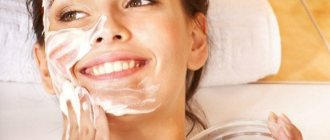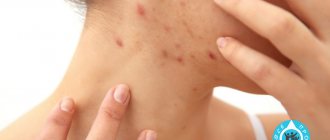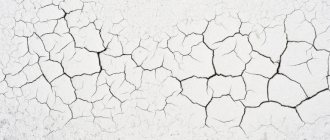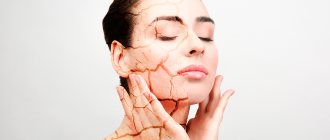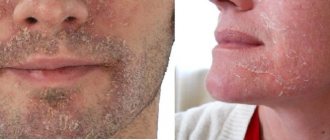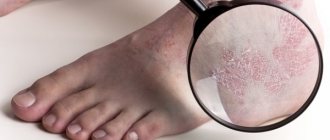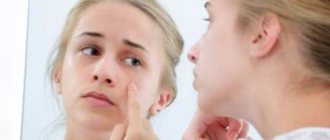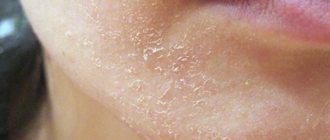How to remove inflammation on the face at home
For people with problem skin, the appearance of acne on the face is nothing new. Many girls use foundation or powder for camouflage. These drugs greatly aggravate the situation and provoke even greater inflammation. There are a number of medications that help get rid of the hated pimple in a short time. Traditional medicine will also help cope with this problem.
Causes and provoking factors of inflammation on the face
First, let's look at the causes of inflammation on the face. They may be as follows:
- Attachment of infection. Penetrating through the skin, pathogenic bacteria lead to the development of an inflammatory process, which can manifest itself in various forms and diseases.
- Food, dust, pollen or any other allergies can also cause inflammation of the skin on the face. In addition to itching and hyperemia, a person may also experience swelling of the epidermis. Allergies are often accompanied by a small rash, similar to the way hives manifest.
- Frostbite or thermal burn. Inflammations on the skin of the face in this case can be either continuous or focal. It all depends on which part of the face was exposed to low or high temperatures.
- Mechanical damage to the epidermis when squeezing out a pimple, or ordinary cracks, scratches, wounds.
- Changes in hormonal levels. Especially often, inflamed acne on the face occurs in adolescents during puberty. Also, such rashes appear in expectant and nursing mothers, or in women during PMS and menstruation.
- A significant weakening of the body’s protective functions also plays an important role. Frequent colds, hypothermia and other negative factors can greatly harm your immunity. For this reason, subcutaneous inflammation on the face is far from a rare occurrence in people suffering from immunodeficiency conditions.
- Poor nutrition.
This is only a small part of the reasons why subcutaneous inflammation may appear on the face. Other predisposing factors often include:
- uncontrolled or prolonged use of potent medications,
- stressful situations,
- rubella, chickenpox and other diseases accompanied by inflammatory processes on the skin,
- eczematous rashes,
- psoriasis,
- dermatitis,
- acne,
- abuse of tobacco products and alcoholic beverages,
- clogging of pores with subcutaneous sebum.
After establishing the exact cause, you can seriously think about how to remove inflammation on your face. If such an anomaly was a consequence of the development of a particular disease, then first it is necessary to cure it, and then deal with the epidermal integument. Although there is a high probability that after eliminating the main cause, inflammatory processes in the thickness of the dermis will go away on their own.
Inflammation of the skin from acne: causes of the process
Human skin has a large number of pores that contain subcutaneous sebum. During the day, dust, dirt and particles of cosmetics settle on the epidermis. As a result, the pores become severely clogged and the inflammatory process begins.
Often the cause of pimple inflammation is insufficient personal hygiene, self-squeezing of abscesses or damage to the upper layer of the epidermis. Pimples also appear as a result of hormonal changes in the body or during long-term use of medications (antibiotics, oral contraception, etc.).
Home remedies for pimple inflammation: list of effective remedies
To treat the inflammatory process, proven pharmaceutical products are used that eliminate pain, redness and other unpleasant symptoms. It is advisable to use it after preliminary consultation with a doctor. Otherwise, it threatens to worsen the condition of the skin and spread inflammation to other areas.
Zinc mash
Refers to products for spot application. Zinc has antibacterial properties and dries the skin a little. A small amount of mash is applied to the problem area before bedtime. In the morning, the inflammation will subside a little, but complete recovery requires 2-3 days. To enhance the effect, it is recommended to use the mash at least 3 times a day in the first days after the appearance of a pimple.
Salicylic acid
The drug belongs to the group of antibacterial and anti-inflammatory drugs. Salicylic acid can be safely used at home to treat acne. Accelerates the regeneration of the upper layers of the epidermis, penetrates deep into the skin, and has a healing effect.
To obtain the most effective results, it is recommended to mix salicylic acid with boric or folic acid. The complex action ensures rapid recovery of the patient.
This medication should be used with caution by people prone to allergic reactions. Before use, you must make sure that you are not allergic to salicylic acid. The product also causes drying of the skin, so excessive use leads to burns on the face.
How to get rid of redness using powder
Beneficial properties include:
- antibacterial and drying effect;
- rapid relief of the inflammatory process;
- good cosmetic effect;
- getting rid of oily shine (important for people with oily skin).
The powder has a delicate texture, so after use there are no scars or scars left on the skin. Some powders contain extracts of medicinal plants (St. John's wort, calendula, etc.), which nourish the skin with essential substances.
Use in pure form or add as an ingredient to therapeutic masks. In the first case, the drug is applied pointwise to the affected area with a thin brush. The effect is observed within 30 days of daily use.
Reduce redness with eye drops at home
Oddly enough, but a remedy such as Vizin also helps to get rid of pimples on the face in the shortest possible time. For treatment, apply a few drops of the drug to a clean cotton pad and place in the freezer for 15 minutes. After the time has passed, apply to the inflamed area for a few seconds. This procedure will help quickly get rid of redness and other unpleasant signs, but does not treat the underlying cause of the appearance.
Treatment with aspirin
The drug is used as part of medicinal masks. To do this, crush 1 tablet of Aspirin and mix with white clay, a few drops of vitamin A and E.
Distribute evenly over the entire face or apply to individual areas of the skin for 10-15 minutes. Exceeding this time increases the chances of dry skin and burns.
Garlic juice
Garlic has natural antibacterial properties and helps quickly cope with inflammation on the face. Freshly squeezed juice contains a large amount of zinc and phytoncides, which help cope with acne. The product is applied pointwise to the affected area, left for a while, then washed off with warm water and baby soap.
Is it possible to burn acne with iodine on the face?
It is necessary to use an alcohol solution of iodine to combat acne after prior consultation with a doctor. The use of the product has several features:
- Iodine is applied pointwise exclusively to uncleansed skin.
- To get rid of the burning sensation and yellow spots, it is recommended to first apply a small amount of moisturizer (cream, lotion, etc.) to the selected areas.
- It is forbidden to use iodine to lubricate boils or teenage pimples.
- The course of treatment should not exceed 60 days, otherwise there is a risk of overdose.
If, after applying iodine, severe redness and burning occurs, you should immediately wash off the product and lubricate the surface with a rich cream. Otherwise, the risk of developing a burn and causing a scar in the future increases.
Cold
A quick and effective way to get rid of a pimple is a piece of ice. Applied locally, cold relieves redness and redness. To enhance the effect, it is better to use ice from infusions of medicinal herbs (calendula, chamomile, etc.).
Treatment methods for skin inflammation on the face
In order to quickly remove inflammation on the face, there is a whole range of measures. It includes:
- therapy with medications,
- salon beauty treatments,
- treatment with folk remedies.
To make the problem disappear as quickly as possible, let's look at each of these options in more detail.
Drug therapy
To remove inflammation of a pimple or skin on the face, you can use pharmaceutical products:
- Antibiotics from the group of tetracyclines (in particular, tetracycline ointment), syntomycins (Syntomycin Liniment), erythromycins (Erythromycin ointment).
- Streptocide, ichthyol or sulfur ointment.
- A weak solution of furatsilin for compresses, lotions or washing purulent inflammations on the face.
- Crushed tablets of activated carbon for application to sore spots, or for gastrointestinal diseases that have caused inflammation under the skin on the face.
- Multivitamin complexes.
To get rid of subcutaneous inflammation on the face, you can combine medications with traditional recipes. This way, the effect can be achieved much faster, and the result will last as long as possible.
Beauty treatments in the salon
If you don’t know what to do with an inflamed pimple, then seek help from a dermatologist or cosmetologist. Today, specialized beauty salons carry out a number of different procedures that help quickly and permanently get rid of a delicate and unpleasant problem.
So, in a salon or specialized dermatology clinic they can do the following:
- facial cleansing with ultrasonic waves,
- peeling, but only if you need to remove minor inflammations on the face,
- ozone treatment, which also promotes rejuvenation of the epidermis,
- mesotherapy using a special anti-inflammatory cocktail,
- laser facial skin cleansing, which is similar in principle to ultrasonic cleansing,
- cryotherapy, which can only be used after preliminary diagnostic measures,
- darsonvalization, in which the facial skin is cleansed of inflamed acne using microcurrent.
Only qualified specialists know how to treat inflammation on the face with such methods. It is impossible to carry out such events at home.
Folk remedies
If you are going to treat inflammation on your face at home, then adopt the following effective methods to get rid of the problem.
- Rubbing the inflamed areas with frozen juice of fresh parsley, or decoctions of chamomile, calendula, peppermint, St. John's wort or string. To do this, you need to prepare a decoction, squeeze out the cake, and pour the resulting liquid into special ice molds. You need to wipe your face with these frozen cubes three times a day.
- Prepare a healing mask from white cosmetic clay mixed with talcum powder in equal proportions. Warm the low-fat kefir slightly, then pour it into the powder mixture. The ratio of all ingredients (in the order they are listed) should be: 1:1:2. Whisk all the ingredients and apply the finished mixture to problem areas. You can remove the remnants of the mask after a quarter of an hour using a cotton pad soaked in a warm herbal decoction. Such cosmetic procedures should be repeated 2-3 times a week until the problem is completely eliminated.
- Remove pits and skins from several large cherries, then rinse well. Grind until pureed, then add a little potato starch. When a homogeneous, but not very thick mass is formed, set aside the bag of starch, mix the mixture and apply to pustules and inflamed areas of the skin. Leave for half an hour, then carefully remove the remaining mask. Perform the procedure twice a week.
In order not to think anymore about how to treat inflammation on the face, you need to seriously take care of its prevention. To do this, you just need to remember a few important recommendations.
Traditional medicine tips on how to remove inflammation on the skin from acne
There are several effective recipes for home treatment of facial acne. The most common are maxi, decoctions of medicinal herbs and creams.
Masks - how to quickly remove them overnight?
Prepared on the basis of various components: pharmaceutical preparations (aspirin, salicylic acid, boric acid, etc.), as well as from various improvised means:
- grate 1 fresh cucumber on a fine grater, add 1 chicken egg, mix until a homogeneous paste is obtained. Apply in several layers (each of the previous ones must dry well). Cucumber juice relieves redness and inflammation, egg white dries the skin;
- mask based on honey, lemon juice and yolk. Mix the ingredients until smooth, apply to the face, leave for 15 minutes and rinse with warm water. To obtain treatment results, 2-3 procedures are sufficient.
Creams - what to apply if a purulent pimple is inflamed?
Homemade creams are very popular:
- mix sour cream, lemon and cucumber juice, chicken yolks, alcohol. Mix all ingredients and place in refrigerator. After hardening, apply pointwise to affected areas. The shelf life of this ointment is 6 months;
- mix olive oil, tea tree oil, vitamin E and A and beeswax. Melt everything in a water bath or in the microwave, mix until smooth. Store in the refrigerator for no more than 30 days.
Herbs and decoctions if pressed
Rubbing with decoctions of medicinal plants helps relieve the inflammatory process, removes redness and other unpleasant symptoms of acne. St. John's wort, chamomile, calendula, lavender, etc. have such properties.
Causes of skin inflammation and their prevention
And, of course, no inflammation will go away from the face if you do not provide the skin with proper care.
- Drug treatment is carried out only with the permission of a doctor and under his strict, constant supervision. Self-medication can provoke even more extensive and widespread inflammation on the face, which may require serious hospital treatment.
- Be sure to normalize the regimen and composition of your diet. Limit the amount of smoked, sweet, fried, and fatty foods in your diet. Include as many fresh juices, fruits, herbs, vegetables, and nuts as possible.
- Ensure that the inflamed area is completely inviolable: do not touch it with your hands and limit any other contact with this area. It is strictly forbidden to squeeze out ulcers, blackheads, and pimples on your own at home: this can cause infection to enter the wound. Mechanical cleansing of the face during inflammation is allowed only in salon conditions.
- Try not to injure your skin with scrubs, despite their excellent cleansing ability. It is better to replace it with a special gel for problematic or sensitive skin.
- You will have to exclude hot baths and washing.
To care for inflamed skin, you need either slightly warm, cool, or room temperature water. Moreover, it is advisable not to take it from a water supply system that does not have filters. It’s better to buy non-carbonated mineral water. Instead of water, it will be much more effective to use decoctions and infusions of medicinal herbs that have an anti-inflammatory effect: chamomile, calendula, St. John's wort, yarrow, parsley, string, oak bark, etc. Pour two tablespoons of chopped herbs into two glasses of boiling water, leave for an hour, strain, wash . - Twice a week, clean your pores using steam baths with the herbs indicated in the previous paragraph (a glass of infusion per liter of water), or with essential oils that have antibacterial and anti-inflammatory properties - tea tree, lavender, jojoba, citrus fruits, rose hips (10 drops per liter water).
- Test any folk anti-inflammatory skin remedy (especially homemade masks) first on the wrist or inner bend of the elbow to avoid an allergic reaction later.
- Take multivitamin complexes in a timely manner (at least twice a year) to strengthen the immune system and protect the nervous system.
- Get regular medical examinations (once a year) to identify internal diseases that can trigger inflammatory processes on the skin of the face.
In any case, even if the reason is not so global, it will not be superfluous. Recommendations from a specialist will help you solve the problem and choose from a variety of anti-inflammatory drugs the most effective and efficient one in your case.
beautyface.net
It should be noted that if the inflammation process lasts for a long time, and the skin of the face requires long-term treatment, during this period it is better not to forget about certain rules:
- do not resort to self-medication;
- do not take hot baths;
- limit salty and fatty foods;
- increase the consumption of vegetables and fruits;
- exclude the use of aggressive scrubs;
- devote time to strengthening the immune system and the nervous system;
- do not give in to the temptation to crush acne with your own hands;
- wash with water at room temperature and chamomile infusion;
- prepare (steam) the skin before applying the mask;
- take steam baths with essential oils or chamomile infusion twice a week.
Homemade masks should be tested for allergies before use.
Inflammations on the face often appear after cosmetic procedures. During this period, proper skin care is very important to avoid the occurrence of acne or comedones. It should be noted that the manifestation of redness and inflammation after laser cleaning can last up to 7 days, since the surface layer of skin cells is removed during the process.
With ultrasonic and vacuum cleaning, unpleasant consequences should disappear after a few hours. After a manual procedure, redness and inflammation can last for quite a long time.
It is important to remember that rashes and inflammation can only be eliminated with the help of comprehensive and regular therapy. So, when purchasing pharmaceutical products against rashes, it would be useful to buy enterosorbent. It will help the body cope with toxins and bacteria, which can also cause acne and inflammation on the face.
Inflammation of acne on the skin of the face is a fairly common problem and it does not only affect teenagers. If the eyes are called the mirror of the soul, then the skin on the face is a mirror that reflects the state of the human body. The reasons for their appearance are quite diverse and before you start fighting acne, you need to understand the essence of the problem.
Various changes in the body, the impact of adverse factors on the skin of the face, bad habits - all this can provoke the appearance of inflammatory processes. In this question about the cause of acne, the most accurate answer can be given by a specialist who will select the most effective method of treatment.
If acne is your constant companion, you should think about proper care. It is very important to cleanse your face of bacteria and impurities. Applying special preparations to a dirty surface will not give any result.
There are a lot of cleansers available for problem skin. However, do not forget about such an effective thing as tar soap. Many don't even know about its existence. Why is it good?
The soap contains medicinal birch tar. It provides the product with a characteristic specific odor. Birch tar is a healing component that performs many tasks:
- fights bacteria
- disinfects
- promotes active regeneration
- dries out inflammations and wounds
- exfoliates
Wash oily skin morning and evening, normal and combination skin once a day. On individual inflammations, you can apply a little soap and leave for a while. During the period of use, it is recommended to reduce the use of scrubs and peels.
Another excellent product that helps remove acne and traces of it is Rescuer cream. Contains essential oils and vitamins that have a beneficial effect on the skin. It not only reduces inflammation, but also promotes skin renewal.
Thanks to simple and affordable products, you can significantly help your skin. The main thing is to know when to stop and not to overdo it.
Dermatologists unanimously insist that pustular inflammations cannot be squeezed out. This will lead to infection of healthy areas, injury to the skin and the formation of scars. Therefore, the question: how to quickly remove an inflamed pimple worries many people. Especially at a time when you need to create perfect skin in a matter of minutes.
What to do with an inflamed pimple - advice from cosmetologists, medications and folk methods of getting rid of acne will tell you. It is difficult to say which of these methods is most effective, since the result depends on the individual characteristics of the skin.
A beauty salon will tell you how to remove inflamed pimples and at the same time avoid unpleasant consequences. Professional specialists will quickly and safely remove the abscess from the client’s skin. Most often, cosmetologists use two of the popular cleaning methods:
- Mechanical using a special stick for squeezing out blackheads;
- Peeling using soft abrasives.
The mechanical method is the most effective of all used. Since the master does all the work manually, carefully working on every area of the skin. A cosmetologist has the opportunity to treat inflamed acne on the face even in hard-to-reach places. Cleaning is carried out in several stages:
- Cleanses the skin of cosmetics, dead cells and sebum.
- Using special preparations, the facial skin is steamed, creating conditions for opening the pores and softening the skin. Cosmetologists resort to steaming and herbal decoctions, cosmetics that help soften the epidermis.
- Before starting to treat acne, the skin is wiped with alcohol-free lotion (this will help to avoid peeling and irritation of the skin in the future).
- Squeezing out pimples occurs using special tools: acne removal sticks. The products have a looped tip with a flat and curved side. The flat side is used to treat acne on the nose, chin and frontal part of the face. Convex - inflammation on the cheeks, lips and temporal part. Sometimes the cosmetologist performs his actions manually. He wraps his fingers in a napkin so as not to damage the skin.
This method of treating acne skin takes about 20 minutes. The result is effective and does not leave any injury. But still, cosmetologists do not recommend performing the procedure before important events. Among the disadvantages of the cleaning method, redness, itching and pain should be highlighted. But all of the above symptoms depend on the individual characteristics of the skin.
The video will help you learn more about the process of squeezing out pimples using tools.
Often, beauty salons resort to peeling. The procedure can be performed mechanically, ultrasound, laser or using cosmetics. Peeling actively removes dead skin cells, allowing you to reach the deep layers of the epidermis. The procedure is recommended for use in the following cases:
- Thickening of the epidermis;
- The presence of an ingrown hair, which causes inflammation and the formation of pus;
- The presence of acne and pimples over a large area of skin.
After peeling, you should avoid direct exposure to sunlight. Skin treated with abrasive substances becomes sensitive to dirt and UV rays, which can cause pigmentation or irritation.
With the help of peeling, you can quickly get rid of acne, as well as make your skin soft and fresh. The advantage of this method is that you can perform mechanical peeling at home. To do this, you can use regular facial scrubs that can be purchased in stores.
Treatment of inflammation on the face is carried out with the help of anti-inflammatory and restorative drugs. The following medications will help quickly and effectively against acne:
- Salicylic acid is characterized by powerful antiseptic and anti-inflammatory properties. Pathogenic microbes die upon contact with the drug, so the skin becomes clean within a few hours.
- The drug "Roaccutane" helps dissolve sebaceous plugs, opens and cleanses contaminated pores. Quickly kills microbes and prevents the development of the inflammatory process.
- Gel "Kvotlan" effectively disinfects the skin and promotes rapid healing of problem areas of the skin. The drug does not contain antibiotics, so it can be used without a doctor's recommendation.
- Ensure that the inflamed area is completely inviolable: do not touch it with your hands and limit any other contact with this area. It is strictly forbidden to squeeze out ulcers, blackheads, and pimples on your own at home: this can cause infection to enter the wound. Mechanical cleansing of the face during inflammation is allowed only in salon conditions.
- Try not to injure your skin with scrubs, despite their excellent cleansing ability. It is better to replace it with a special gel for problematic or sensitive skin.
- You will have to exclude hot baths and washing.
- Having decided to normalize the functioning of the sebaceous glands and get rid of skin redness through medication, you should not self-medicate. Otherwise, you can provoke even greater inflammation of the skin, which as a result will require serious treatment in a hospital;
- A mask or ointment prescribed by a cosmetologist, the use of which should help get rid of red acne and other inflammations, may not bring the desired effect. The reasons for this most often lie in poor nutrition;
- Regular consumption of fatty, spicy and smoked foods leads to deterioration of the sebaceous glands, so before starting treatment you need to balance your diet and be sure to include more fruits, vegetables and fresh juices;
- Often the reasons why facial skin disease does not go away for a long time lie in self-squeezing of blackheads and pimples. Doing this is strictly prohibited: it is recommended not to touch the affected areas of the skin with your hands, which will prevent infections from getting into the wounds;
- Do not under any circumstances use scrubs to clean inflamed skin; instead, it is better to use a decoction of medicinal herbs for washing, as well as an ointment for caring for problematic and sensitive facial skin, for example, “Syntomycin”. The product will promote the proper functioning of the sebaceous glands and remove the causes of red acne;
- Until you manage to get rid of redness on the skin, it is strictly forbidden to wash your face with hot water. The best option for washing is mineral still water at room temperature. It is even better if a decoction of chamomile or calendula flowers is used for this purpose. Preparation of the decoction: 2 tbsp. l. pour 500 ml of boiling water over the herbs, let it brew until it cools.
The pimple has become inflamed deep under the skin, what should I do?
Subcutaneous acne causes severe discomfort and pain to a person. The rod is located deep under the skin. To speed up the ripening process use:
- applying ice to the inflamed area. This procedure helps relieve redness and pain;
- then you need to warm the pimple well. High temperatures will speed up the ripening process and increase blood flow;
- apply bee honey.
Fresh aloe juice, which is applied to the affected area for 10-15 minutes, will help speed up the process of pimple maturation. If folk remedies do not help, then you need to resort to the use of pharmaceutical drugs (salicylic acid, antibacterial ointments, etc.).
Honey and clay
Masks and lotions based on natural honey will help reduce noticeable inflammation much less.
In combination with regular aspirin, you get a “rescue mask” for inflammation on the face. To prepare it you need:
- 1-2 tablets of aspirin (not effervescent!);
- clean water or herbal decoction;
- 1 tsp natural honey.
The liquid is applied 1-2 drops onto the tablets so that they disintegrate into small granules. Then honey is added to the pulp and mixed thoroughly.
The finished mixture is applied to cleansed facial skin without rubbing into the skin. After 5-10 minutes, rinse with lukewarm water and moisturize the skin with a light cream. A positive result becomes noticeable after just 1 mask, but it is recommended to do it at intervals of 1-2 days until the skin is completely healed.
Masks made from white, blue and green cosmetic clay are good for preventing inflammation. They are also used after the pus comes out, when it is necessary to quickly remove the remaining redness and speed up the healing of wounds.
The clay is diluted according to the instructions with clean water or herbal infusions (from horsetail, sage, chamomile, etc.).
However, in cases where there are simultaneously inflamed areas and purulent pimples on the face, clay should be abandoned.
Consequences of squeezing pimples
Experts categorically prohibit squeezing out pimples on your own. This leads to the addition of a secondary infection and aggravation of the patient’s condition. Also, popping your pimples yourself increases your chances of scarring in the future.
To combat acne and inflammation of the skin, various pharmaceutical and folk remedies are used. Their use should be carried out after preliminary consultation with a specialist. It is forbidden to treat boils and other purulent rashes on your own. Before starting treatment, you need to make sure there is no allergic reaction to the components of the product.
Causes of the red surface of the tongue and the appearance of plaque
Here we will look at the reasons why a person’s red tongue is covered with a characteristic overlay.
- You must have noticed that with a sharp increase in temperature, heat and fever, the entire face and skin may become red and swollen. The same applies to the oral cavity.
- Dry scarlet deposits are caused by inflammation of the gray matter of the brain, as well as its outer layers. The same symptoms are caused by inflammation of the gastrointestinal tract, intestinal mucosa and even lungs.
- The cause of the shiny, glossy sediment is a critical level of body temperature and multiple burns to the body.
Scarlet fever
- A change in color to a red-crimson hue can indicate severe systemic diseases of a viral or infectious nature. As a rule, the therapist diagnoses a sore throat, pneumonia or scarlet fever based on this color of the tongue. If we are talking about the latter, then another symptom for diagnosis can be considered inflammation of the papillae on the tip and back of the tongue. If the red color of the muscle darkens, then you should look for kidney diseases and infections, or suspect intoxication of the body. The cherry hue also speaks of infectious and viral diseases such as measles and influenza.
- Allergies to cosmetics and food elements manifest themselves in the form of uneven scarlet spots appearing on the mucous membrane.
Various dyes and pigments in products can also produce this effect.
- Burns and injuries to the organ also lead to swelling and redness of its surface.
- The specific disease Kaposi's sarcoma manifests itself in the form of characteristic spots on the muscle with a dense blue coating on them.
- Anemia (anemia) leads to a painful and pale color of the oral cavity, while the muscle remains unnaturally red.
- Red and slightly brownish sediment on the surface is left by bad habits, such as drinking wine, overusing coffee and tea products, and smoking.
- Also, characteristic overlays are caused by parasites in the body.
- Let’s not forget about the tongue disease glossitis, which is always accompanied by redness.
- Surprisingly, even an ordinary dark stone, as well as advanced caries, can contribute to unnatural deposits on the mucous membrane.
- Patients often notice a red tongue after taking courses of antibiotics.

